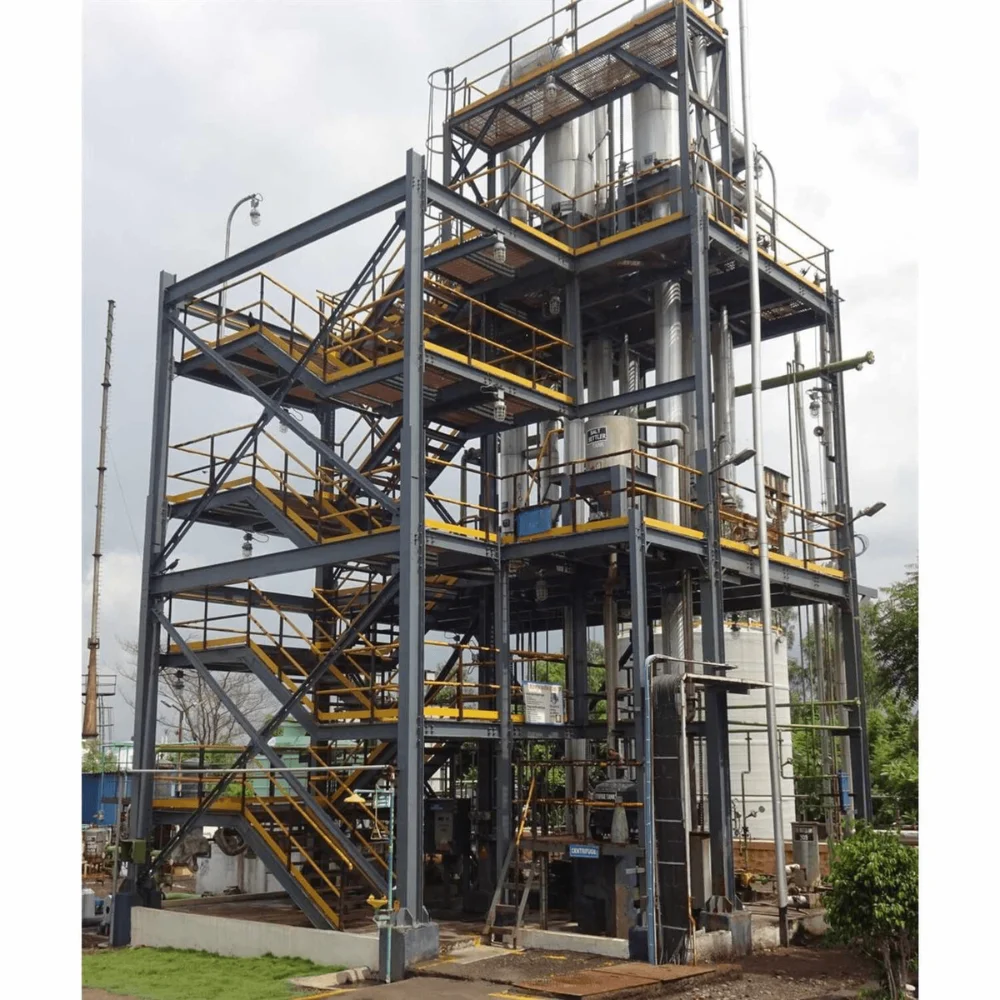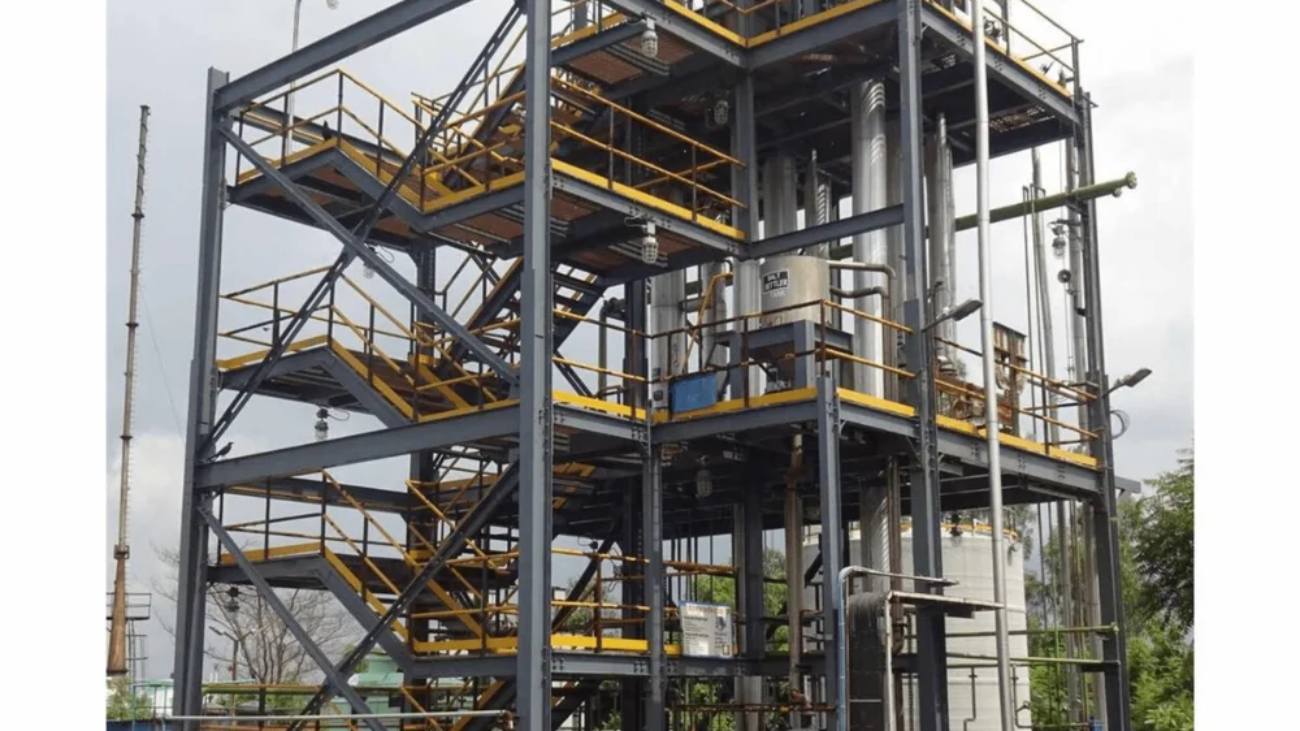Zero Liquid Discharge (ZLD) is a process used to treat industrial wastewater so that no liquid waste is released into the environment. Goldfinch Evaporation Systems is a leader in providing ZLD solutions, helping industries protect the environment and conserve water.
Zero Liquid Discharge (ZLD) is a comprehensive approach to wastewater treatment that aims to eliminate any liquid waste from leaving the facility. This process is especially vital for industries that face stringent environmental regulations or operate in water-scarce regions. Goldfinch Evaporation Systems specializes in designing and implementing ZLD solutions that help industries reduce their environmental footprint, conserve water, and recover valuable resources.

What Is Zero Liquid Discharge (ZLD)?
Zero Liquid Discharge (ZLD) is an advanced wastewater management technique designed to completely remove liquid waste from an industrial facility. The primary goal of ZLD systems is to recover and recycle nearly all the water from wastewater streams, ensuring that only solid waste is left behind. This method is crucial for industries that need to comply with strict environmental standards or seek to minimize their water consumption.
Key Components of ZLD:
- Pre-Treatment: The first step involves filtering out large particles and adjusting the pH levels of the wastewater to prepare it for further treatment.
- Concentration: The wastewater is concentrated through evaporation or membrane processes to significantly reduce its volume.
- Crystallization: Remaining water is evaporated, leading to the formation of solid crystals from dissolved salts and other solids.
- Final Treatment: The solid waste is dried and either reused or disposed of safely.
How Zero Liquid Discharge (ZLD) Works:
Understanding the detailed workings of ZLD systems is essential to appreciate their complexity and effectiveness. Here’s a closer look at each stage of the ZLD process:
Pre-Treatment
Filtration: The initial stage of ZLD involves removing large particles and suspended solids from the wastewater using mechanical filters. This step is crucial to protect downstream equipment from damage and fouling.
Chemical Treatment: Chemicals are added to the wastewater to adjust its pH levels and coagulate dissolved solids. This preparation ensures that the wastewater is in an optimal condition for subsequent treatment stages.
Concentration
Evaporation: Thermal or mechanical evaporation methods are employed to remove a significant portion of the water content from the wastewater. This step greatly reduces the volume of liquid waste, concentrating the remaining water.
Membrane Processes: Technologies such as Reverse Osmosis (RO) and Nanofiltration (NF) further concentrate the wastewater by separating water from dissolved salts and organic compounds. These processes produce a high-quality permeate that can be reused within the facility.
Crystallization
Evaporative Crystallizers: These devices further evaporate the remaining water, resulting in the formation of solid crystals from dissolved salts and other solids. This stage is critical for achieving zero liquid discharge.
Salt Recovery: The solid by-products are collected and can sometimes be reused in other industrial processes or safely disposed of.
Final Treatment
Drying: Any remaining solid waste is dried to ensure that no residual moisture remains. This step is essential for converting the waste into a stable, non-leachable form.
Solid Disposal: The dried solids are either reused in other processes or disposed of in an environmentally safe manner, completing the ZLD process.
Benefits of Zero Liquid Discharge (ZLD):
Implementing a ZLD system offers numerous benefits, which extend beyond mere regulatory compliance.
Environmental Protection
ZLD systems ensure that no liquid waste is discharged into the environment, thus preventing contamination of water bodies. This is particularly important in areas where industrial discharges could harm ecosystems and human health.
Water Conservation
By recovering and reusing water from wastewater streams, systems significantly reduce the demand for fresh water. This is crucial for industries operating in regions facing water scarcity.
Regulatory Compliance
Many industries face increasingly stringent regulations regarding wastewater discharge. ZLD systems help facilities meet these regulations by eliminating liquid effluent and reducing the environmental impact of their operations.
Resource Recovery
ZLD systems enable the recovery of valuable by-products, such as salts and minerals, from wastewater. These by-products can often be reused in other industrial processes, providing additional economic benefits.
Cost Savings
While the initial investment in ZLD systems can be substantial, the long-term savings from reduced water consumption, lower disposal costs, and potential revenue from recovered materials can make the investment worthwhile.
Applications of Zero Liquid Discharge (ZLD):
ZLD systems are used across a wide range of industries, each with unique wastewater challenges. Here are some of the key applications:
Power Plants
Power plants generate large volumes of wastewater from processes such as cooling tower blowdown. ZLD systems are used to treat this wastewater, recovering water for reuse and ensuring compliance with environmental regulations.
Chemical and Petrochemical Industries
These industries produce complex wastewater containing hazardous chemicals. ZLD systems effectively treat this wastewater, recovering water and minimizing the risk of environmental contamination.
Textile and Dyeing Industries
Textile and dyeing operations generate wastewater with high concentrations of dyes and chemicals. ZLD systems are used to treat this wastewater, recovering water and reducing the environmental impact of these operations.
Mining and Metallurgy
Mining and metallurgical operations produce wastewater with high levels of heavy metals and other contaminants. ZLD systems are used to treat this wastewater, recovering water and ensuring safe disposal of solid waste.
Food and Beverage Industry
The food and beverage industry generates wastewater with high organic content. ZLD systems can treat this wastewater to recover water and reduce waste disposal costs, while also complying with strict hygiene and safety standards.
Challenges and Considerations in Implementing ZLD:
While ZLD systems offer significant benefits, they also come with challenges. Understanding these challenges is crucial for successful implementation.
High Costs
The initial investment and operational costs of ZLD systems can be substantial. This is due to the complexity of the technology and the energy-intensive nature of processes such as evaporation and crystallization. However, the long-term savings from reduced water consumption and lower waste disposal costs can offset these initial expenses.
Energy Consumption
ZLD systems require significant energy inputs, particularly for thermal evaporation processes. This can result in high operational costs and environmental impacts associated with energy use. Advances in energy-efficient technologies and the integration of renewable energy sources can help mitigate these concerns.
Complex Operation
ZLD systems involve multiple stages and require skilled personnel to operate and maintain. Ensuring that the system functions effectively and efficiently can be challenging, particularly for facilities with limited technical expertise. Comprehensive training and support from experienced providers like Goldfinch Evaporation Systems can help address these challenges.
Managing Solid Waste
While ZLD systems eliminate liquid discharge, they produce solid waste that must be managed. Ensuring the safe disposal or reuse of these solids is a critical consideration for any ZLD implementation. Proper planning and adherence to regulatory requirements are essential to avoid environmental and legal issues.
Goldfinch Evaporation Systems and ZLD:
Goldfinch Evaporation Systems is a leader in the design and implementation of ZLD systems. Our innovative solutions are tailored to meet the unique needs of each industry, ensuring optimal performance and sustainability.
Innovative Technologies
Goldfinch Evaporation Systems utilizes state-of-the-art technologies to achieve zero liquid discharge. Our systems incorporate advanced filtration, membrane processes, and evaporative crystallizers to ensure complete water recovery and waste minimization.
Customized Solutions
We understand that each industry and facility has unique wastewater treatment needs. Our team works closely with clients to develop customized ZLD solutions that meet their specific requirements and operational goals. This tailored approach ensures that our systems deliver maximum efficiency and effectiveness.
Commitment to Sustainability
At Goldfinch Evaporation Systems, we are committed to promoting sustainability and environmental protection. Our ZLD systems not only help industries comply with regulations but also contribute to water conservation and resource recovery. We strive to minimize the environmental impact of our solutions and support our clients in achieving their sustainability goals.
Expertise and Support
Our team of experts provides comprehensive support throughout the entire ZLD implementation process. From initial design and installation to ongoing maintenance and optimization, we ensure that our clients achieve the best possible outcomes. Our commitment to customer satisfaction and technical excellence sets us apart in the industry.
Case Studies: Success Stories with Goldfinch Evaporation Systems
Case Study 1: Power Plant
A major power plant faced challenges with cooling tower blowdown wastewater. By implementing a ZLD system designed by Goldfinch Evaporation Systems, the plant was able to recover 95% of the water, significantly reducing its freshwater consumption and ensuring compliance with environmental regulations.
Case Study 2: Chemical Manufacturing
A chemical manufacturing facility was struggling with the disposal of hazardous wastewater. Goldfinch Evaporation Systems developed a customized ZLD solution that effectively treated the wastewater, recovered valuable chemicals for reuse, and eliminated liquid discharge.
Case Study 3: Textile Industry
A textile dyeing company implemented a ZLD system from Goldfinch Evaporation Systems to address its wastewater challenges. The system recovered 90% of the water, reduced the environmental impact of dye discharge, and enabled the reuse of water within the facility.
Future Trends in Zero Liquid Discharge (ZLD)
The future of ZLD is shaped by ongoing technological advancements and increasing environmental awareness. Here are some key trends to watch:
Advanced Membrane Technologies
Innovations in membrane technologies, such as forward osmosis and advanced RO membranes, are enhancing the efficiency and effectiveness of ZLD systems. These technologies offer improved water recovery rates and lower energy consumption, making ZLD more viable for a wider range of applications.
Integration with Renewable Energy
Integrating ZLD systems with renewable energy sources, such as solar or wind power, can reduce the environmental impact and operational costs associated with energy-intensive processes like evaporation. This approach aligns with the global shift towards sustainable and renewable energy solutions.
Digitalization and Automation
The adoption of digital technologies and automation is revolutionizing ZLD systems. Smart sensors, real-time monitoring, and automated controls enhance the performance and reliability of ZLD processes. These technologies enable proactive maintenance, optimize energy use, and improve overall system efficiency.
Focus on Resource Recovery
Future ZLD systems will increasingly focus on the recovery of valuable by-products from wastewater. Technologies for extracting and purifying salts, minerals, and other useful compounds will become more sophisticated, providing additional economic benefits and supporting the circular economy.
Conclusion:
Zero Liquid Discharge (ZLD) is a critical solution for industries seeking to protect the environment, conserve water, and comply with stringent regulations. Goldfinch Evaporation Systems is at the forefront of delivering innovative, customized ZLD solutions that ensure water recovery, regulatory compliance, and economic benefits. As technology continues to advance, ZLD systems will become even more efficient and sustainable, offering greater opportunities for industries to minimize their environmental impact and promote resource conservation.
By partnering with Goldfinch Evaporation Systems, industries can achieve their ZLD goals and contribute to a more sustainable future. Our expertise, commitment to innovation, and focus on customer satisfaction make us the ideal choice for any organization looking to implement a ZLD system. Contact us today to learn more about how we can help you achieve zero liquid discharge and enhance your environmental stewardship.
Also Read: A Simplified Comparison : MEE vs. MVRE


